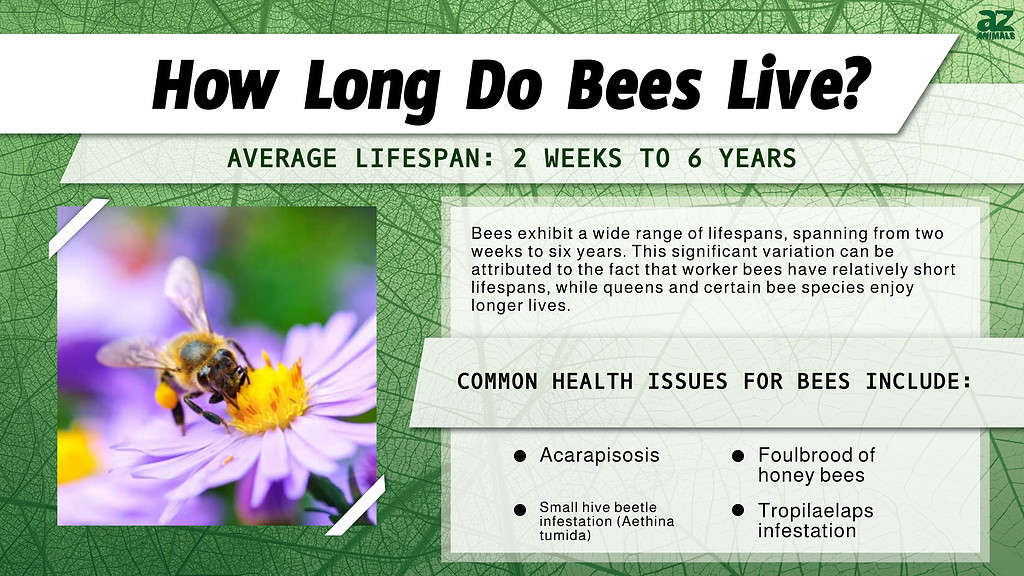
The lifespan of a bee depends on its species and role in the colony. There are about 20,000 bee species worldwide, 4,000 of which are native to the US. Let’s dive into the longevity of bees, looking at the lifespan of different species.
How Long Do Bees Live?
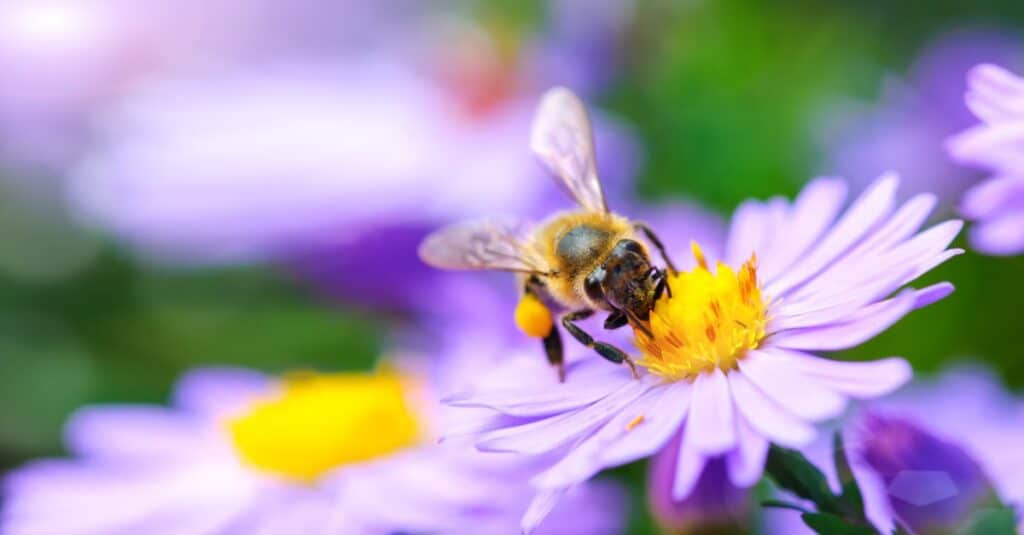
The three most common bee species native to North America are the honeybee, bumblebee, and carpenter bee.
©iStock.com/miroslavmisiura
The lifespan of bees ranges anywhere from two weeks to six years. That’s an incredible range! The short answer on why bee lifespans varies so much is that workers live very short amounts of time while queens and certain bee species can live longer.
There are three common bee species native to North America that we’ll discuss here: honeybee, bumblebee, and carpenter bee.
Bee Lifespan: Honeybee
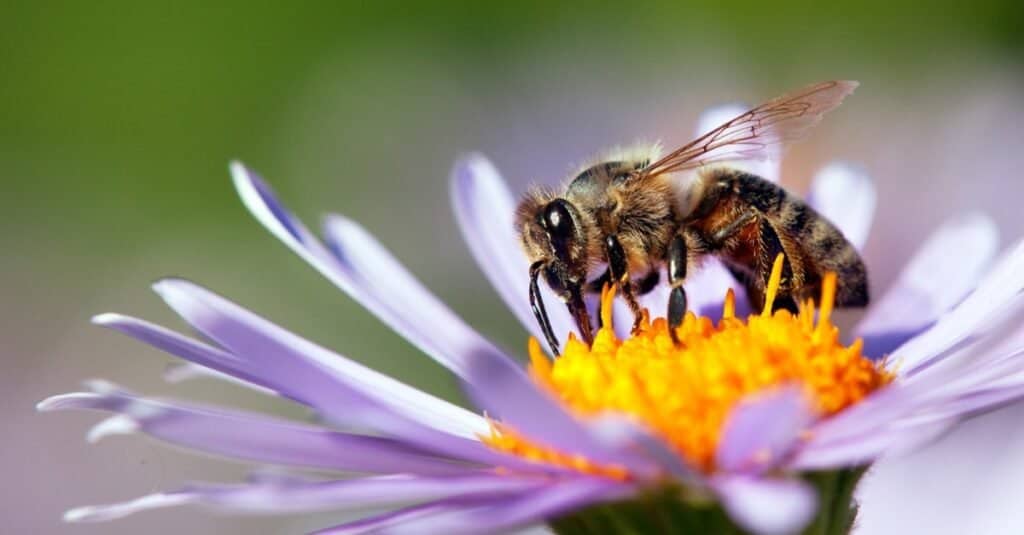
A queen
honeybee
could live for three to four years if she is disease-free. In some cases, queens have been known to live for up to six years!
©Daniel Prudek/Shutterstock.com
Honeybees are ‘superorganisms’ because of their complex, well-structured colonies. Honeybee colonies can have anywhere from 50,000 to 60,000 bees, each playing a particular function in the colony’s success.
Worker
Worker honeybees live between 6 and 7 weeks in the spring/summer and 4 to 6 months in the autumn. During the warmer months, they have a lot of hungry larvae to feed and honeycomb to produce. The fall workers have no offspring because the queen has stopped laying eggs. The workers must gather around the queen during the winter to keep warm, ready to re-emerge in the early spring.
Queen
A queen honeybee could live for three to four years if she is disease-free. In some cases, queens have been known to live for up to six years!
Male Bee (Drone)
About 55 days is the usual life span of a honeybee drone or male bee. Drones die shortly after mating with the queen.
Bee Lifespan: Bumblebee
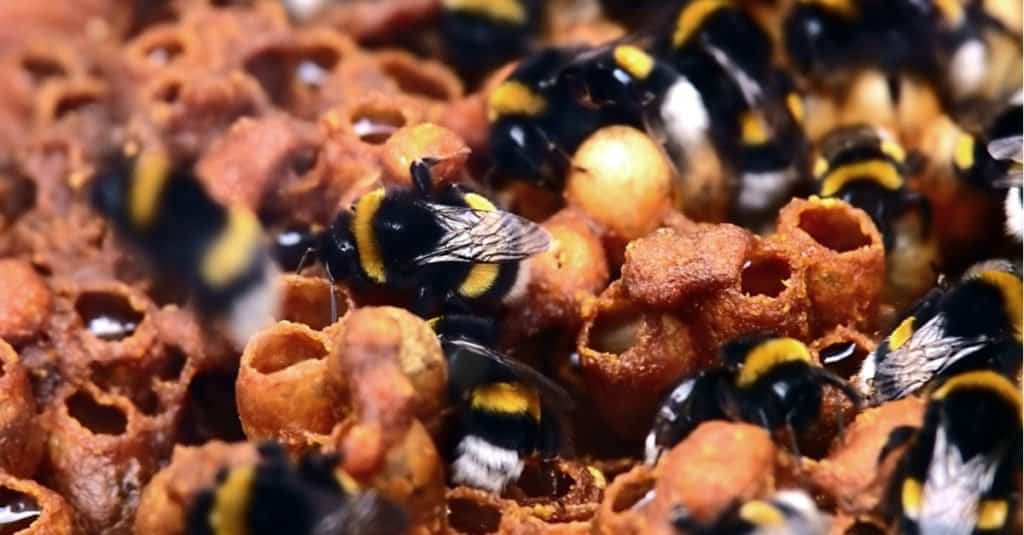
Worker bumblebees live 2 to 6 weeks on average
©dwphotos/Shutterstock.com
The lifespan of bumblebees varies; however, members of tropical colonies tend to have lengthier lifespans according to studies.
Worker
A worker bumblebee’s lifespan can range from two to six weeks, depending on the species and the study. Working bees who spend most of their time foraging are expected to live longer than those who spend most of their time in the hive.
Queen
One year is about the average lifespan of an uninfected or otherwise unharmed queen bee of bumblebees; this includes the time spent in hibernation during the winter months. During the late summer or early fall, new queens are born. To build up fat stores for the winter, they will first mate and feed. The new queens emerge in the spring of the next year to start new colonies.
Male Bee
Male bumblebees, called drones, live for about 2 weeks on average. They’re born to mate, and they’re born at the same time as virgin queens. they, along with the new queens are the last to emerge from the colony, but they do not hibernate for winter. Their short life span comes from the fact, that they die after mating. When they’re ready to fly off to mate, they’ll never return to the nest.
Bee Lifespan: Carpenter Bee

Carpenter bees are solitary bees that live an average of 1 year.
©Zety Akhzar/Shutterstock.com
Carpenter bees live one year as solitary bees. Carpenter bees are solitary, meaning they do not dwell in a colony. Each nest contains only a few carpenter bees. When nesting materials are plentiful, eastern carpenter bees live solitary lives, with only one reproductive female per nest.
Worker
Carpenter bees are solitary bees that live an average of one year. In contrast to honeybees, carpenter bees do not support a hive or vast colony. However, all carpenter bees are “worker bees” in a sense, as they all perform vital jobs.
The female does all the nest-building. As soon as she determines where to build her nest, she begins excavating a tunnel to lay her eggs. Protecting and guarding the female and territory is the male carpenter bee’s task.
Queens (Female Bees)
Female carpenter bees have a lifespan of around a year, but this can vary. When she lays her eggs, the female will live through most of the summer, but rarely two winters. Mothers and daughters may live together in some species’ nests. Subordinate queens can live up to three years if they nest socially.
Male Bee
Male honeybees Unlike the honeybee, the males do not die after mating and they can have several encounters. However, carpenter bees have a short life span, and males live only one season before dying. There will be a rebirth of the bees in spring after long winter hibernation.
How Do Most Bees Die?
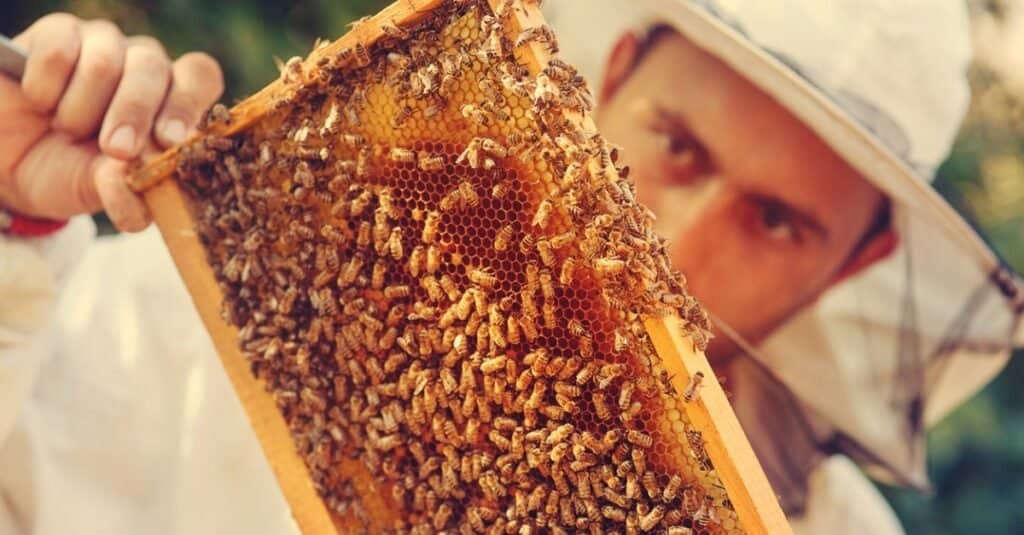
A Beekeeper collecting honey from a honeycomb with bees.
©iStock.com/djiledesign
The most common cause of bee deaths is the following:
Natural Causes
Age, disease, and so forth are all causes of death for all organisms.
Pesticides
Slow death or amazingly fast and sudden/immediate death brought on by pesticide poisoning.
Pollinator Decline
Due to a variety of circumstances, including habitat loss, disease, and most notably, human activity, the number of bee pollinators is decreasing.
Why Do Queen Bees Live Longer?
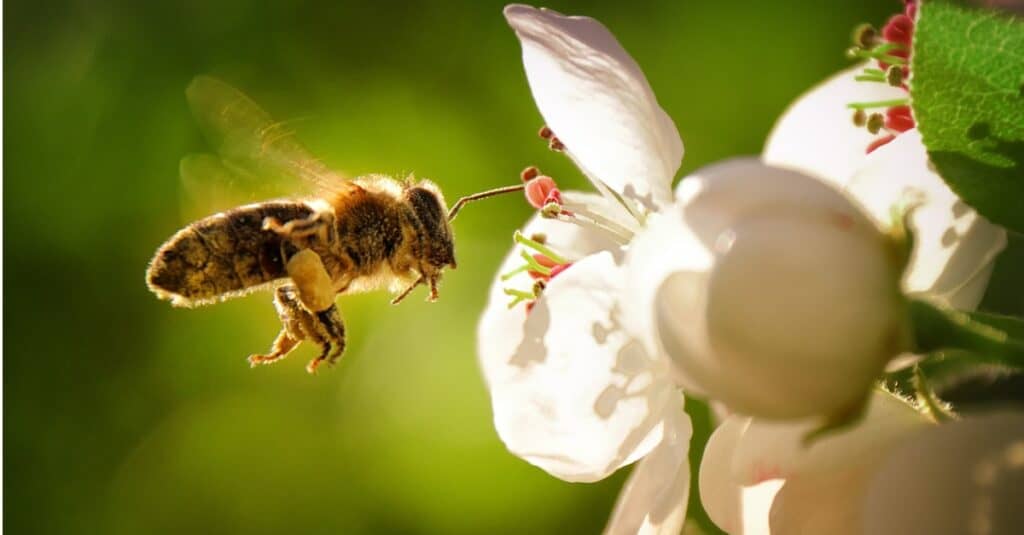
Queen
bees
live significantly longer than worker bees due to their diet. Despite not having a hereditary advantage, their eating habits cause them to double in size and weight.
©iStock.com/SusanneSchulz
Queen bees live significantly longer than worker bees due to their diet. Despite not having a hereditary advantage, their eating habits cause them to double in size and weight.
Royalactin, a protein present in honeybees, is secreted from the glands on their heads. Once this fluid interacts with pollen, it generates a chemical brew that stimulates the growth and maturation of queen bees. This helps the queen grow larger, reproduce better, and live longer.
The photo featured at the top of this post is © iStock.com/SusanneSchulz
Thank you for reading! Have some feedback for us? Contact the AZ Animals editorial team.






